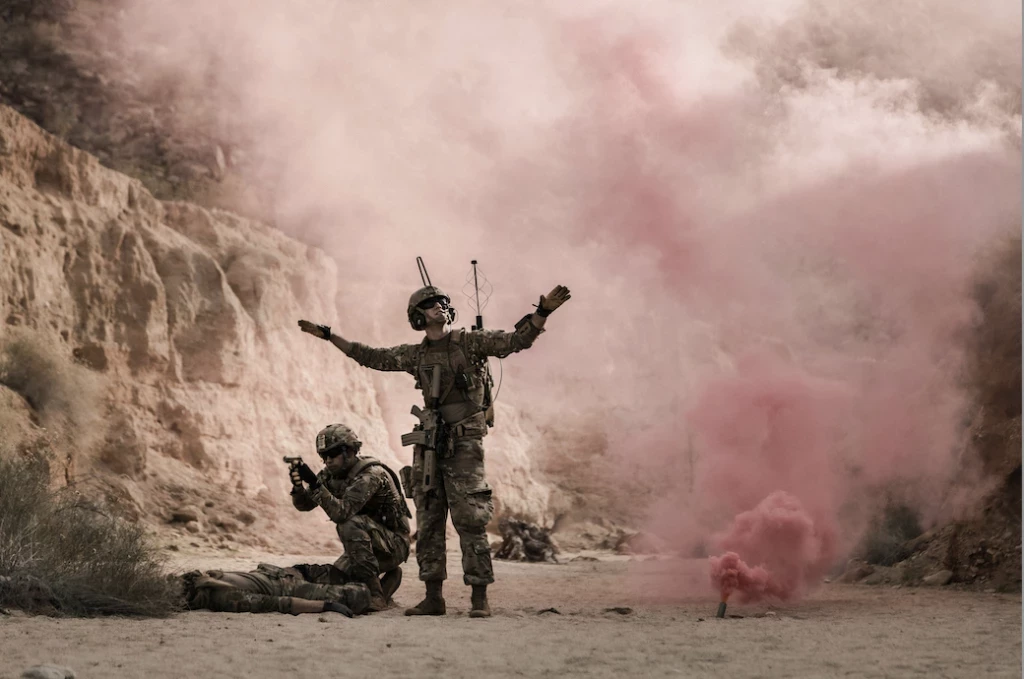The future of drone and counter-drone technology
As drones become smaller and faster, new solutions will be required to disable them. Here are a few handheld counter-drone systems that may end up in the hands of armed forces around the world
Add bookmarkHow will drones shape future warfare?
The Association of the United States Army (AUSA) held its annual exposition of military technology from 8-10 October in Washington DC. The meeting brought together some of the largest and most well-known firms of the military industrial complex from the US and abroad. Two particularly interesting technologies that were showcased at AUSA were unmanned aerial vehicles (UAVs) as well as the latest anti-drone systems.
AUSA 2018: New UAVs
There were several UAVs that were showcased at the AUSA expo. Here is a rundown of some of the most promising platforms.
RECOMMENDED: Small is beautiful: Nano drone tech is advancing
- InstantEye MK-3 Gen-4-D1/D2 sUAS, produced by Instant Eye Robotics. This is a small UAV (sUAV) that weighs 3lbs, has a maximum payload of around 3lbs, and an endurance of up to 30 minutes. Its major appeal is that it requires a single operator and can go from stowed to operational in around one minute. In addition, it is EUD/tablet compatible and has integral gimbaled EO/IR cameras. On February 2018, the company announced that it had sold 800 InstantEye Mk-2 GEN3-A0 sUAS systems to the US Marine, on top of a previous order.
- Orion UAS, produced by Elistair. This platform has an operating altitude of 80m/262ft, a data rate of up to 200mbps, a GPS system, a HD 1080p daylight camera, an optical x30 zoom and a black box. What makes this UAV so interesting is that it is tethered, which means it can fly continuously for hours on end, making it perfect for protecting sensitive areas. This will be particularly useful for law enforcement operations, and for setting up quick telecommunication systems in disaster areas.
- SkyRanger R60 and SkyRaider R80D, produced by Aeryon Defense USA. The SkyRaider has an endurance of 30-50min, and a max ground speed of 31mph, with payloads of up to 4.4 lbs. Meanwhile, the SkyRanger has similar characteristics but a payload of 1.5.lbs. Both systems have tablet-based controls and are equipped with HDZoom 30. They are suitable for search and rescue operations and reconnaissance.
Anti-drone technology
Drone legislation is still scarce and differs from country to country. General laws relating to privacy, aviation, data protection and the like are applicable to drones, but it could be questioned whether the industry can provide sufficient safeguards to deal with new challenges and threats.
Unsurprisingly, drones can be utilized for nefarious activities like illegal surveillance of sensitive infrastructure. ISIS has also manufactured rudimentary drones as improvised explosive devices (IEDs) in Syria. Similarly, they have been flown by criminals to transport drugs or to smuggle contraband into prisons. In symmetrical war, countering drone swarms will be a top priority for armed forces.
Be sure to check out our guide to countering drones: This is how militaries can defend against drones
As a result, a diverging market has also emerged from this booming industry, the market for disabling drones. Some unconventional solutions have already emerged, for example, in Holland, local police forces have joined forces with Guard From Above, a raptor-training security firm based in the Hague that trains eagles to grab drones mid-air. However, there are other gadgets to keep in mind.
The Smart Shooter
One solution demonstrated at AUSA 2018 was the from Israeli company Smart Shooter. They have two systems, one called SMASH 2000, and a more advanced iteration called SMASH 2000 Plus. SMASH is an advanced optical sight that can be attached to small arms. The system utilises look and track and target detection technology, to substantially increase precision aiming and reduce time-to-hit.
The SMASH 2000 Plus variant has a “drone mode” that allows the operator to target a UAV in flight both during day and night time. The company’s website explains that “the SMASH fire control system puts a precision anti-drone capability at the fingertips of its users, featuring built-in targeting algorithms that can track and hit even very small drones skimming along at high speed, at ranges of up to 120 meters, with the first shot.”
Depending on the version of the system, its options also include, counter-drone/UAS mode, recording and debriefing, among others. Many in attendance at AUSA, including myself, can testify to how easy it is to master the system. The international media has provided has also responded positively to the technology on offer.
At AUSA 2018, one US army personnel member with combat experience noted, “I like the Smart Shooter idea, especially if the sight also works on individuals and armoured targets. It seems to enhance our capability to put targets down without adding too much weight.”
The DroneKiller
Another anti-drone product showcased at AUSA 2018 is aptly named DroneKiller, produced by IXI EW. This system is a standalone handheld device that employs software-defined radio technology to disable drones. There are two versions of this device, a handheld “rifle” and a system that can be attached to a rifle. It has a range of up to 1,000 meters, operates on seven frequency bands and can be in an active mode for up to two hours, with eight hours in standby. It weighs 7.5lbs and is surprisingly comfortable to carry.
The market potential for this product is strong, in fact, Japan has bought over 100 units of the DroneKiller in preparation for the Summer 2020 Olympics in Tokyo.
How will drones affect the equipment carried by future infantry?
For anti-drone technology in conflict zones, the main goal is to equip soldiers with anti-drone capabilities while keeping their equipment weight to a minimum. In the context of defence, the DroneKiller “rifle” iteration may struggle to find buyers as it is effectively another weapon that a soldier will have to carry on the field. A system that can be attached or detached, like the Smart Shooter or the smaller variant of DroneKiller, may have better prospects
It is equally important for anti-drone technology to be relatively future-proof, as Drones in the future will maintain higher altitudes, be equipped with advanced cameras with improved zooming systems, and they will be far smaller. Many commentators at the conference lamented that we may get to a stage where drones become invisible to the naked eye, highlighting the need for indeification systems.
Indeed, the future of drone/anti-drone technology for combat operations will also have repercussions for composition and organisation of the typical infantry squad. Let’s take a quick look at a US Army infantry rifle squad, which consists of nine soldiers. There have been plenty of discussions and reports about how the squad of the future should be organized, for example, see: US Army Major Hassan Kamara’s commentary “Rethinking the U.S. Army Infantry Rifle Squad,” published by Military Review.
In his essay, Major Kamara explains how “technology and automation seem to have increased the workload of the squad on contemporary battlefields, with more equipment for the same nine people to manage and operate in addition to legacy warfighting functions. With regards to technology and the infantry squad of the future is, Kamara concludes, “emerging military technology that will grow to enhance the capability of the squad, like armed drones and other robotics, make a strong case for increasing the number of soldiers in the infantry squad with another team of riflemen.”
This is a very interesting prospect to consider. Will future capabilities require one member of an infantry squad to be solely responsible for counter-drone activity? In conjunction, will one operator carry a sUAV, a DroneKiller for example, and be the main individual tasked with dealing with enemy drones? Will more police forces utilise systems Smart Shooter-like systems with drone locks?
The infantry rifle squad of the future, be it from the US army or any other, may very well need a “drone-only” operator, which may mean adding one more member to the squad or replacing someone that has other tasks.
Final Thoughts
Drone and anti-drone technology will continue to evolve simultaneously. The next generation of UAVs will be lighter, smaller, more complex and able to multi-task, depending on the client’s need. And with that will come the necessity for the industry to figure out new, more effective ways of shooting these platforms down.






















